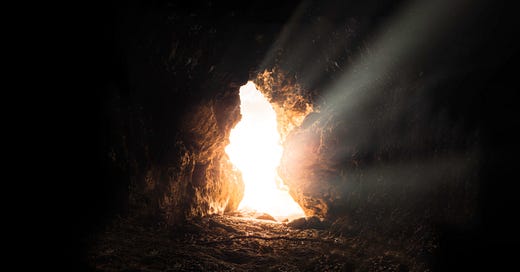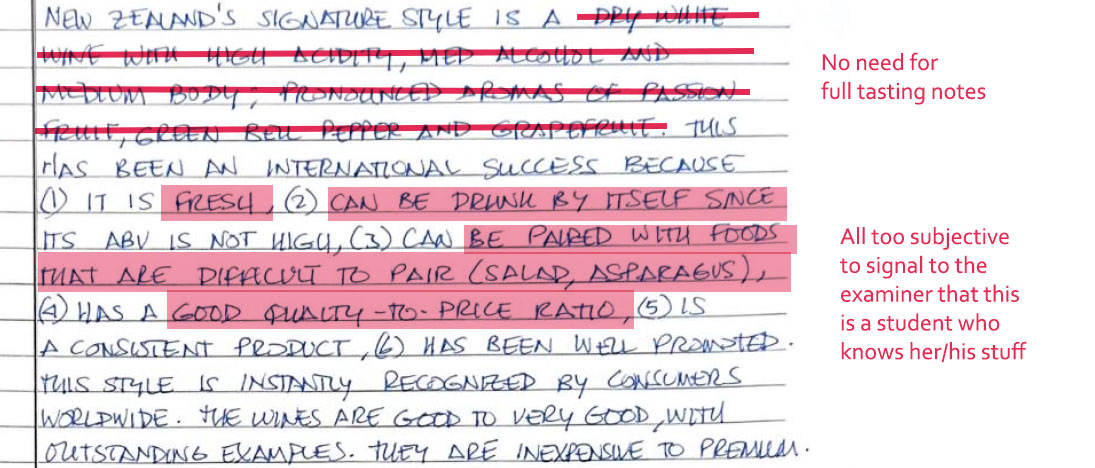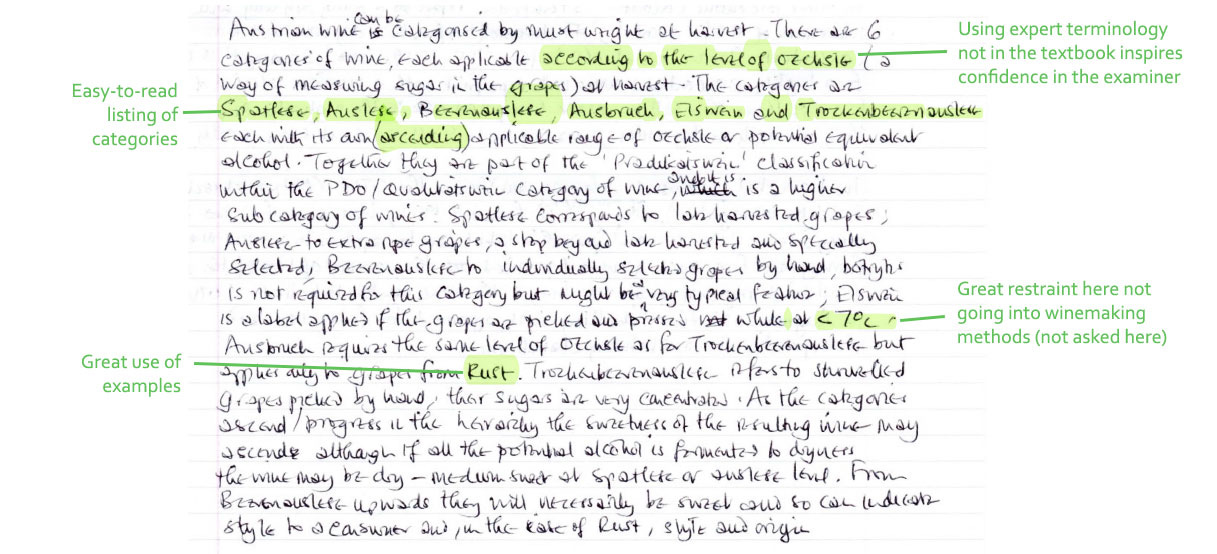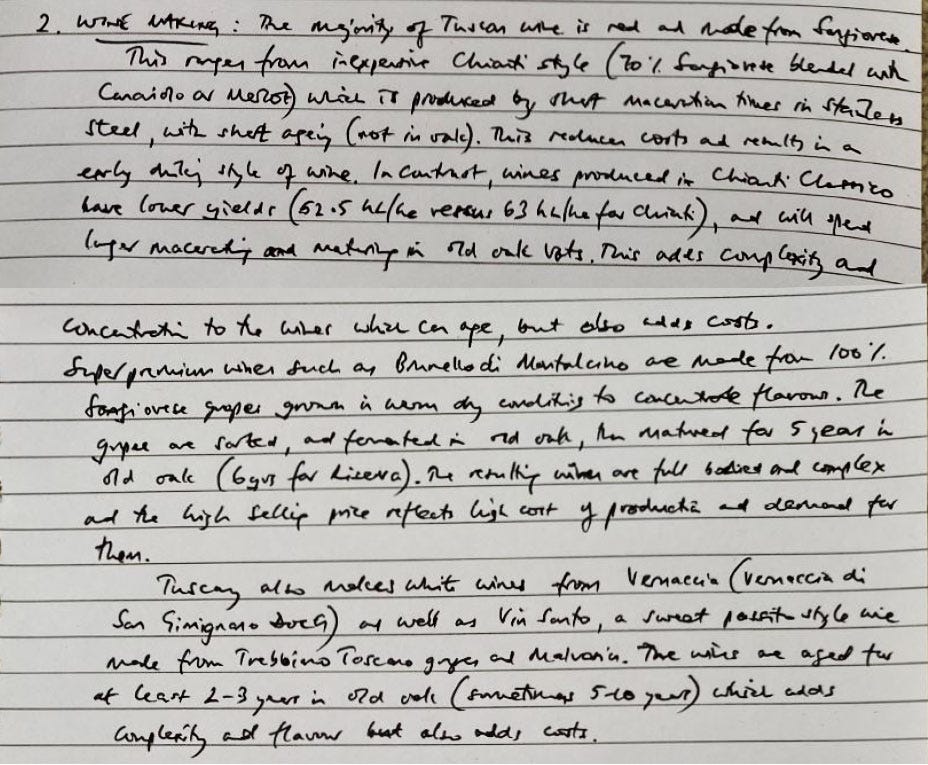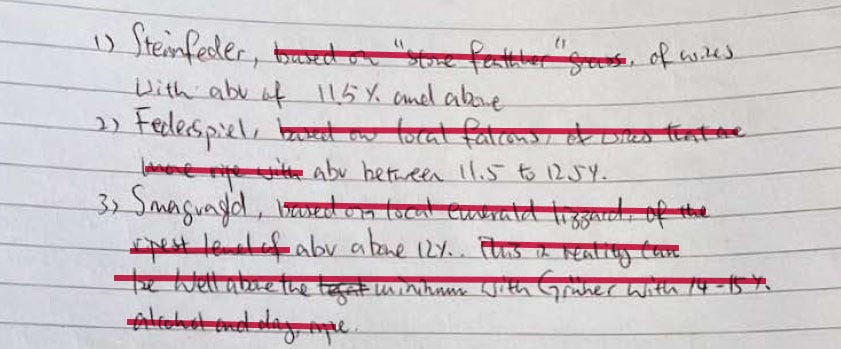Ultimate D3 theory exam support drop 🎁
Wrap up your last week of studying with these five boosts
In a week’s time, we will be sitting at our exam centers answering the theory questions with grace and confidence. Hard work pays off - we’ve got this 💪
This is a care package containing all the most useful resources I’ve curated while running this newsletter for the past three months. I hope you find them useful!
What Each Grade Looks Like
TL;DR
This section contains 13 answers by actual subscribers, four of which received grades ranging from just Pass to Distinction. See all 13 full answers here.
❗Just Pass
Question
Explain how the growing environment (80%) and commercial considerations (20%) influence the grape varieties used in the following districts: a) Stellenbosch; b) Robertson; c) Walker Bay.
Answer excerpt - see full answer here
The subscriber who received a shaky pass from Mags, one of our guest contributors, star educator and wine merchant, also received the following comment:
I have this student down as a ‘pass,’ but I suspect in the real exam it would require a remark. Depending on examiner, I wouldn’t be surprised to see this as a fail, even though this student quite clearly knows a lot about the topic.
They have made the classic Diploma student error in that they have told the examiner everything they know about these regions and not necessarily answered the question. Or at least, not as well as they could have.
Mags has kindly given a model answer in the concise, confident tone:
Regions such as Stellenbosch, Walker Bay, and Robertson are located in the Western Cape, possessing a wide range of natural factors which allow for the growing of several varieties. The ‘big six’ — Cabernet Sauvignon, Pinotage, Shiraz, Chenin Blanc, Chardonnay and Sauvignon Blanc — all have international appeal as they are grown in more globally recognisable regions, allowing South Africa to benefit from their international success.
All of the above varieties require different climates to thrive. For example, Cabernet Sauvignon is a thick skinned variety which can grow in moderate to hot climates. Stellenbosch is moderate by a range of mountains. While Cabernet Sauvignon can thrive in this region on the 30th parallel, the cooler Simonsig Cabernet Sauvignons tend to be more elegant and fresher vs the warmer Helderberg counterparts. Clonal selection allows for Chardonnay to be grown in a range of styles across Stellenbosch due to its versatility[…]
👌 Pass
Question
Explain the diversity of Sauvignon Blanc wines produced in New Zealand and comment on their successes and challenges faced over the last 40 years. (80% weighting) What is the New Zealand wine industry doing to protect its own future? (20% weighting)
Answer excerpt
Here is another sample answer for Pass. This is an unfortunate score, as she/he obviously is super knowledgeable about New Zealand and wine and food pairing!
More from Mags on this answer:
Examiners are humans, too. If you lead with weak points, they will judge you. So, use the appropriate terminology, correct figures and business jargons to impress them.
There are three answers with varying levels of success at tackling this question. See this PDF for the whole scripts. The above excerpt is indexed “Answer 2“.
👏 High Merit, if not Distinction
Question
Outline the traditional classification of Austrian Wine based on must weight at harvest. (30% weighting) Describe the other classification systems in current use. (70% weighting)
Answer excerpt
There are four answers with varying levels of success at tackling this question. See this PDF for the whole scripts. The above excerpt is indexed “Answer 1“.
🔥 Definitely Distinction
Question
Explain why and how Tuscany can produce wine of different styles, quality and price points.
Answer excerpt
The reasons why Mags gave it a Distinction include:
Very concise - every sentence had a score, if not two
Great coverage - not many subscribers mentioned Vernaccia. This one did, and it stopped where it should
High accuracy - figures are all correct and relevant
Confident tone - this subscriber writes well, clearly and with confidence - a priceless style for exams like the Diploma
There are five answers with varying levels of success at tackling this question. See this PDF for the whole scripts. The above excerpt is indexed “Answer 1“.
More on handwriting and style
Two other key takeaways from the masterclass with Mags are:
Always reread your handwriting. If you can’t read it, the Examiner definitely won’t be able to, either.
Don’t waffle - each sentence you write should have a point. Or two!
Point one refers to the very unique writing in the excerpt for the NZ question. Point two relates to the following answer, which is mine actually 😂
Words of wisdom from Mags re waffling:
The Diploma is a numeric, factual, analytical degree. Every sentence you write on the exam should score you a point. If not, do yourself a favour, don’t waste time on it. Have fun with wine after you’ve done it.
Cheat Code for When You Panic
Among the invaluable tips Mags shared is the following cheat code. You can use it when you’re perferting your mastery of each region, or when you feel stuck answering a mean question on the exam.
This would definitely come handy if you are asked to analyse the stylistic diversity and commercial strengths and weaknesses for dry Furmint 🤯
D3 cheat code
Grape growing
Climate
Climate types
Summer/Winter
Length of growing season
1-2 weather hazards
Soils, if known
Topography: hilly/flat, fertile or not
Yields, if known
Variety and blends
Reds whites rose (sparkling, if made)
Percentage of grape in blends
training systems: VSP vs bush vines
Wine making
vessel
MLF
Lees
Oak: New, Old, French, American, Austrian, Hungarian alternatives
Size of vessels
Time in oak
Laws
Regional names; villages, subregions
Quality levels
Commercial considerations
Flashcards to Hone Your Mastery
Flashcards are how many of us study. Whilst they are definitely helpful, they are often overwhelmingly wordy and siloed by region/country. The key is to know what are you studying for and choose the right set of flashcards.
The following are two good decks on Brainscape that you can use for free to finetune your last week of studying for D3:
💡 Comprehensive deck
Created by Jenni Beard
A vast deck of 3,995 cards
Goal = to learn every region in detail
Typical level of detail as followed:
💡 Last seven days deck
Created by Kelly Liang
A manageable deck of up to 800 cards
Goal = to know key concepts and numbers
Typical level of detail as followed:
Yes, this is my own deck with the regions and figures that I’m focusing on. You’re most welcome to use it. I will finish putting in the ageing requirements and New World numbers in the nexgt few days 🙌
Textbook-style Blank Maps
Time to test if we indeed know our regions! I can’t recommend enough Alex Tsui’s thoughtfully formatted set of blank maps - all mirror images of those in our D3 textbook. Here is a snapshot of what these 54 blank maps look like:
I aim to fill out four to five maps a day for the next week, especially for the mainstream regions like Burgundy, Piedmont and Napa. Such a great way for visual learners to revise!
Podcasts to calm your soul
Finally, for those who learn better by listening, here are some podcast episodes to boost your revision:
Seven common mistakes Diploma students make and how to fix them with Anne McHale MW, hosted by Interpreting Wine
Striving for excellence, Oxford style, with Diploma alum Alex Tsui, hosted by Wine Ghosts
Diversity in Argentinian wines with journalist Amanda Barnes, hosted by GuildSomm
New trends for Chianti and Piedmont with Sarah Heller MW, hosted by the Drinking Hour
New Zealand with the country’s first MS Cameron Douglas, hosted by GuildSomm
Amazing Austria with buyer Freddy Bulmer, hosted by the Drinking Hour
Making wine in China’s Gobi Desert with winemaker Martin Shen, hosted by Bottled in China
For more regionally focused webinars, check out Circle of Wine Writers
Command Verbs A-Z
Apply - To use relevant knowledge in a new context
Assess - To evaluate and make a judgment about the topic or issue given
Comment - To state facts and give details on the given subject
Compare - To identify similarities and differences
Define - To specify meaning
Describe - To set out characteristics
Discuss - To explain, explore different aspects, present arguments, consider relevant evidence, and provide a balanced view
Evaluate - To judge the quality, importance or value of something
Examine - To break something down and consider each part in detail
Explain - To give reasons or to describe something to demonstrate your comprehension
How - To describe the process to demonstrate your comprehension
Identify - To name specific items, elements or procedure of a given subject
Outline - To provide a structured summary or overview of a given subject
Why - To give reasons to demonstrate your comprehension
That’s it for this care package! I have QAed all the resources and selected the best of the best. Hope this makes you feel better about studying!
Day 94 questions will be with you tomorrow 6:00am GMT per usual. See you soon 😘


